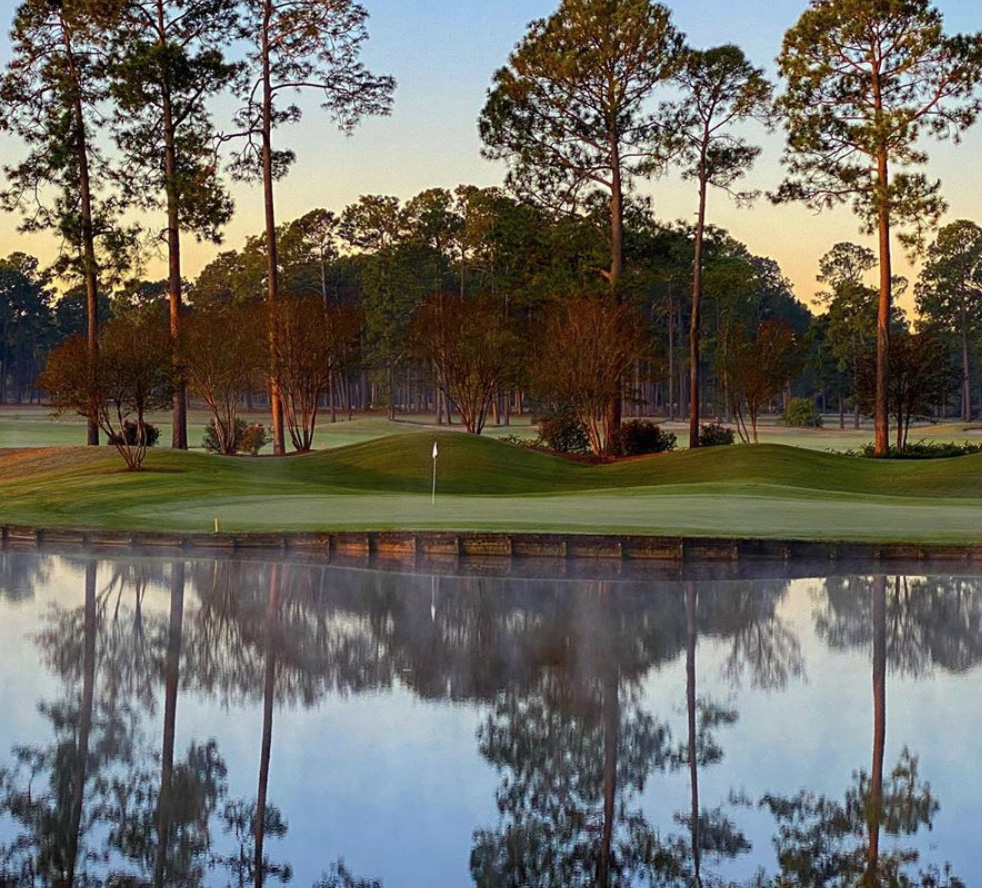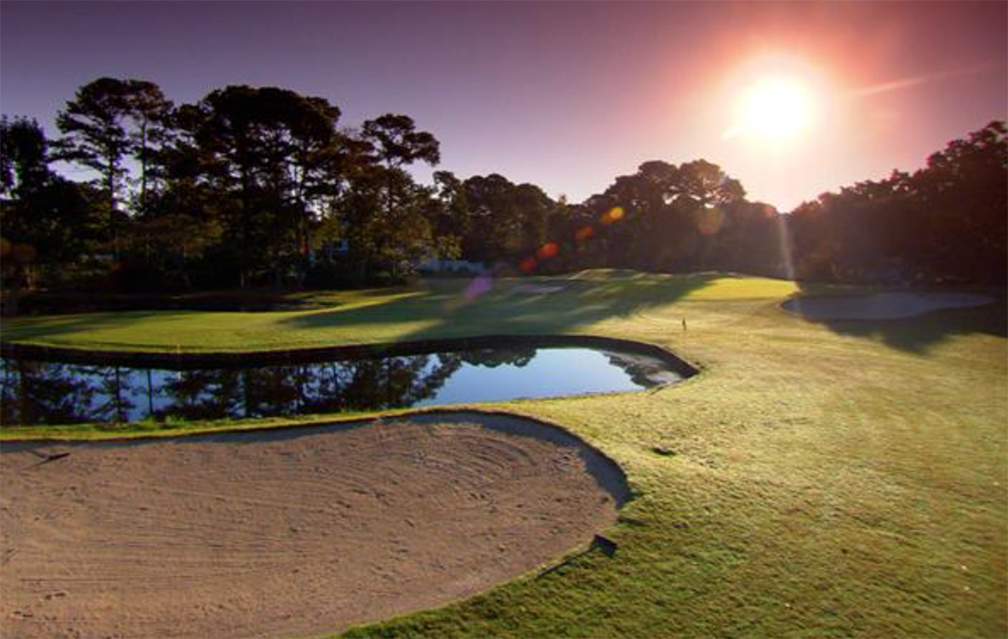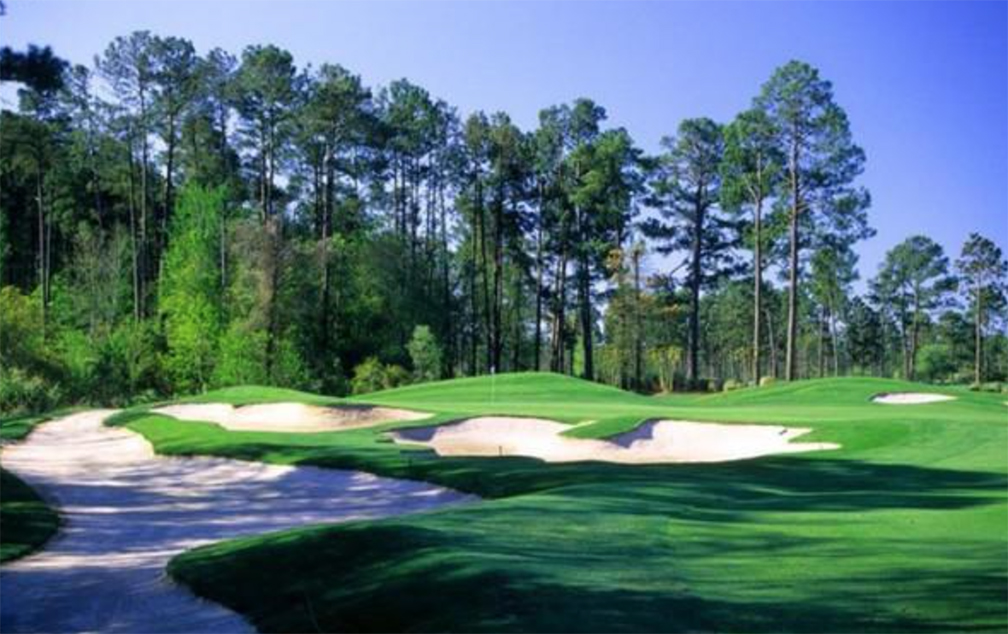
Litchfield
If you’re on the hunt for a bushel full of varied golf on a budget, then there’s no place anywhere like the Myrtle Beach area of South Carolina. Here golfers of every skill level can find a place that’s right for them, as an abundance of courses provide a happy medium for the high-handicappers and scratch players and virtually everyone in between.
The destination boasts more than 100 courses in its “Grand Strand” area, which extends north from Georgetown, through Myrtle Beach proper, and into North Carolina’s southern coast. It’s a place where golf – at least for our purposes – is the main draw, or slice, as it were.
This golfers’ paradise boasts layouts designed by many of the world’s top architects. Coupled with its location on the Atlantic coast and plenty of amenities and attractions, players can have almost as much fun off the course as on.
Let’s take a look at four of the area’s best (but slightly underrated) golf courses. All four of these tracks and 18 others are part of an exclusive group of Prime Times Founders Collection courses, which represent some of the best of what Myrtle Beach has to offer.
It’s hard to go wrong with any of the offerings in the Myrtle Beach area, but this quartet has stood the test of time and always produces plenty of bang for the buck.

King’s North
Plenty of thrills at Pawleys Island’s Litchfield CC & River Club
On the South Strand of Myrtle Beach, about 30 minutes from the airport, are two courses, Litchfield Country Club, and the River Club, that offer a little something for everyone.
The duo is in the hamlet of Pawleys Island, one of the East Coast’s oldest recreational retreats. Both courses, and the residential developments around them, were once portions of large rice plantations and are characterized by the terrain associated with the Carolina’s Lowcountry: mostly flat wetlands dotted by oaks draped in Spanish moss.
Despite the fact that Litchfield CC is almost 20 years older than River Club, the two are very good companion layouts, their entrances barely a mile apart, making them ideal for the 36-holes-a-day outings so common to the area.
Designed by Willard Byrd and opened in 1966, Litchfield CC is the dean of South Strand layouts, meshing a traditional design with an established setting, top-notch conditioning, and attention to detail.
Playing as a par-72 and 6,692 yards from the tips, Litchfield CC‘s features tree-lined fairways and mid-sized greens. A round here is energized by bump-and-run options, encouraging creativity around the greens.
Only three of the 10 par-4s extend 406 yards or more and the longest (No. 3) is just 425. But the key to success here is finding the fairway. The par-3s are also a challenge. The 202-yard fourth and 219-yard 12th require a well-struck hybrid or long-iron. The fourth is a one-shotter that carries over water to a green flanked by a pair of bunkers. The putting surface tilts back to front; there isn’t much danger in going long, so hit one more club than you think.
Because of the constant doglegs, the par-4s at Litchfield CC must be tackled with care. An example is the 406-yard finisher, which curls to the right. Water left of the fairway is reachable and drives that get too close to the turn bring trees into play on the approach, which involves a shot across an arm of the pond and between two bunkers.
What you lose on the par 4s, you might get back on the par 5s, the longest of which is a relatively short 538 yards. The 520-yard 13th is Litchfield’s signature hole. A lake is prominent on its entire port side and there’s OB right. The approach is squeezed by a tree on the left, and the green is guarded on three sides by sand and at the rear by water.
Though many Myrtle Beach-area courses have tweaked their design over the years, Litchfield CC has maintained its original features. The course is straightforward and not overwhelming, giving you a chance to score.
The 6,677-yard, par-72 River Club was the second course built on Pawleys Island, designed by Tom Jackson, and opened in 1985, Its front nine runs alongside some Litchfield holes, so the terrain is very similar. River Club‘s fairways are wide and inviting, but it’s the approach shots – many to well-protected greens – that create the course’s degree of difficulty.
Jackson scattered more than 100 bunkers about the grounds and water factors on 15 holes. Unlike the older Litchfield CC, eight River Club greens involve forced carries.
The putting surfaces are above-average size-wise, giving mid- to high-handicappers a fair chance to get on while challenging more skilled golfers to hit the correct segment of the green. Most of the trouble here is in front of or around the greens, so when selecting an iron for the approach make sure to grab enough club.
With only two par-4s extending over 400 yards, River Club can wear you out with mid-length two-shotters. Two of the four par 5s – the buttonhook 496-yard sixth and 518-yard closer – can easily be reached in two, but trouble awaits at both.
Most players who tee it up at River Club will recall how they played the par-5 finisher. This dogleg-left is short enough to be reached in two, as the tee shot that shortens the hole is played to a land spit girded on three sides by water. If you have the gumption to venture that direction, the 185-yard second shot should be in your wheelhouse. With the clubhouse in the background on a hill above the green, it’s a fine ending to a round.
The River Club boasts a creative design and is fun to play. Its straightforward routing makes it equally enjoyable for newcomers and veterans. The live oaks and native wildlife contribute to the ambiance.

Litchfield CC
Avocet is Wild Wing Plantation’s survivor and one of the area’s best courses
There were once four courses at the expansive Wild Wing Plantation but now there are two – Avocet, a Larry Nelson signature course designed by Jeffrey Brauer, and Hummingbird, which was reduced in 2005 to a links-style, nine-hole track.
Avocet features multiple tees (some of which are elevated), wide landing areas, contoured fairways (including the occasional double-fairway), grass bunkers, a moderate amount of sand traps, strategically placed water, and fast, elevated putting surfaces. There’s even a double-green serving two holes.
Opened in 1993, Avocet is a course where each hole is memorable for its enjoyment, aesthetics, and playability. It was the third course built at Wild Wing, but it has always been considered the property’s best and most unique track.
The opening hole, a 402-yard par-4, is defined by grass depressions in lieu of sand bunkers around the green. The par-4 sixth features a three-tiered, double-green shared with the par-3 17th. The 362-yard ninth, considered by many to be the signature hole, has a double-fairway split by a line of grass and sand-filled pot bunkers.
The 308-yard par-4 14th is a reachable hole that has most golfers thinking about birdie or better. But that means ripping your tee shot over water and a series of pot bunkers to a green bisected by a large ridge running front to back.
Design aficionados will relate to the large depression on the front-left part of the green on the aforementioned ninth, a re-creation of the “Valley of Sin ” on the 18th green at St. Andrew’s Old Course. The 227-yard par-3 12th hole is a mirror image of Scotland’s famous and often replicated Redan hole, only longer and with sharper teeth.
The 453-yard par-4 18th, hailed as “Cape” on the course guide, was patterned after the famed C.B. Macdonald cape hole at the Mid-Ocean Club in Bermuda, sweeping leftward around water down the entire left side. It tempts players to cut off as much as they dare to shorten the most difficult approach shot on the course.
Most players like expansive fairways and big greens, and Avocet has plenty of these. While it may not be traditional, Brauer gave a nod to the game’s architectural origins with a non-conventional design approach.
With its scenic surroundings coupled with a variety of interesting holes, Avocet is a track that produces great shots and even better memories.

Avocet
King’s North is tricky but solid
King’s North at Myrtle Beach National (one of three courses at the facility, along with Southcreek and West) was fashioned by the Arnold Palmer Group and opened in 1974. It was spruced up in 1996 by Palmer and his design associate Ed Seay, who left no stone upturned to make the course what it is today.
Palmer’s routing brings lakes, ponds, and marshes into play on 16 of its holes. The land was heavily reshaped, so the course has plenty of roll and movement.
The layout is noted for its gimmicky holes. First there is the 365-yard par-4 third, with a putting surface on a cape fronted by a South Carolina-shaped bunker. Then there’s the famed 568-yard par-5 sixth, nicknamed “The Gambler,” that tempts golfers with a shortcut to the green via an island fairway. The hole was christened by the late singer Kenny Rogers himself in 1996; his spike marks are cast in concrete near the tee.
And don’t forget King’s North‘s locally celebrated closer, which from the tips tops out at 464 yards. The left side has more than 40 bunkers while its right flank is bordered by a lake.
The collection of par 3s here is another strong point. Each play to a green guarded in front by water, none more so than the 140-yard 12th, which plays entirely over water to an island green; there’s no bailout right, while two sand bunkers lurk along the left.
Despite all the attention-grabbing holes, King’s North is known first and foremost for its playability. King’s North is a par-72 at 7,017 yards from its back set of six tees; the layout is suitable to a variety of different skill levels. It can play as difficult or as easy as you want.

King’s North

